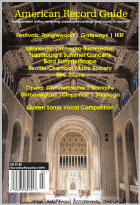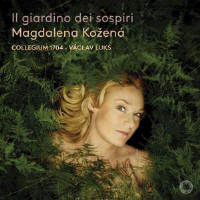Texte paru dans: / Appeared in: |
|
|
Outil de traduction ~ (Très approximatif) |
|
|
Reviewer: John
W. Barker
This program is Kožená’s
exploration of the Baroque chamber cantata and its extensions. The heart of
the venture is three full cantatas, each representing distinct regional
traditions (of Venice, Naples, and Rome). All three set texts that present a
character’s “sighs”, lamentations over romantic loss—two from realms of
classical mythology and one from Italian epic. Benedetto Marcello’s Arianna
Abbandonata (1727) sets the protests of Ariadne, who has been left behind by
Theseus. Leonardo Leo’s Angelica e Medoro (1730) treats a moment presented
in Ariosto’s Orlando Furioso. And from the newly assimilated Handel we have
his Qual ti Veggio (1707), building on the ancient story of Hero and
Leander. plus English translations. This is an unusually probing exposition into the Baroque cantata, not just a cursory bundling of examples; and collectors of early 18th Century music should most definitely explore it. | |
|
|
|
|
Cliquez l'un ou l'autre
bouton pour découvrir bien d'autres critiques de CD |
|




